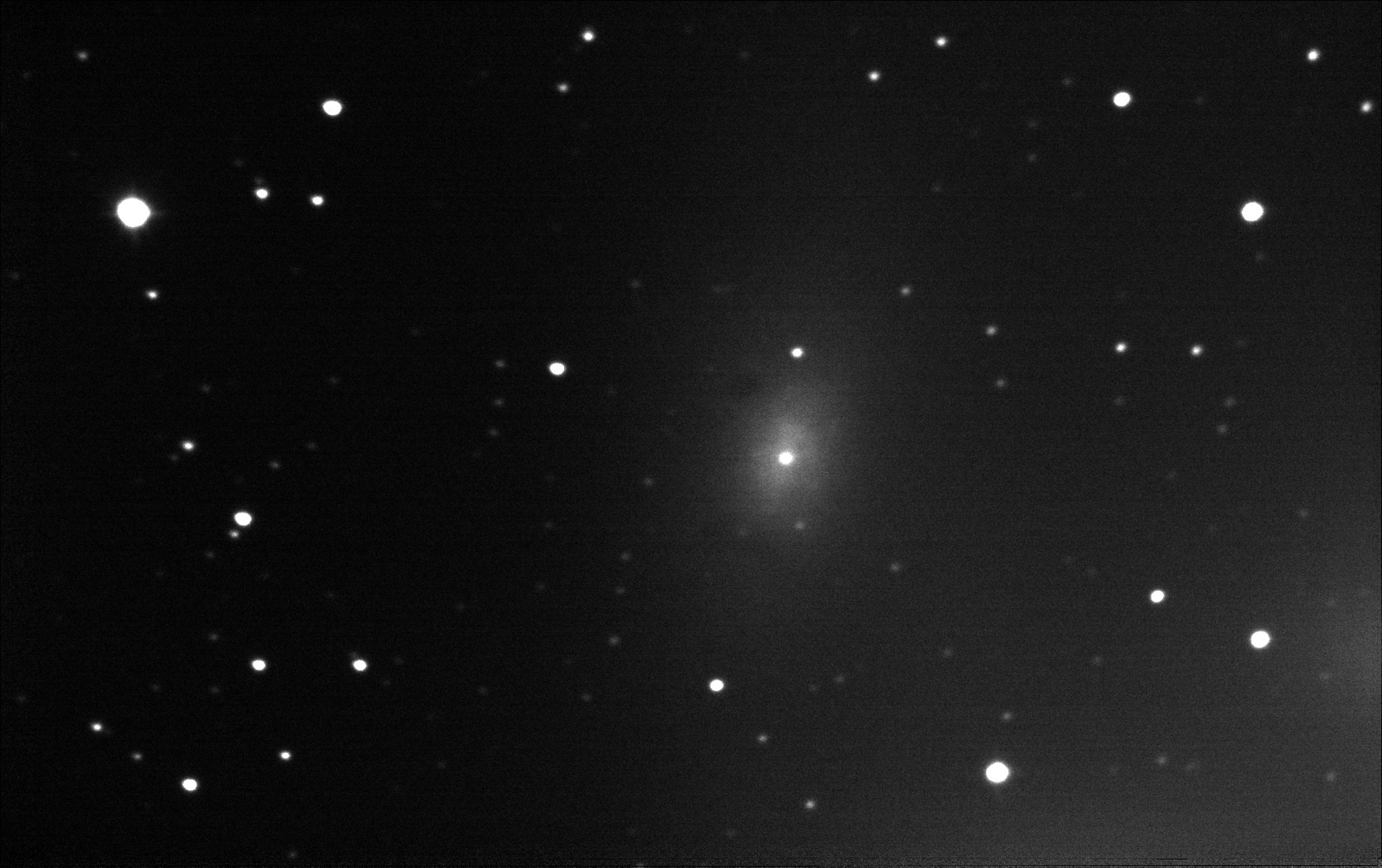Captured on 7th January 2022 with the Alan Young Telescope by Ivan Walton, Rod Smith and Ted Pearson.
Category Archives: Alan Young telescope
Contributions To Citizen Science Projects With The Alan Young Telescope
Link to a downloadable version of this article, including images we have submitted… Citizen Science contributions
Some time ago, it was decided that CADSAS should contribute to Citizen Science Projects where possible with the Alan Young Telescope. So we upgraded our camera to exploit the full potential of the telescope, with a limiting magnitude of 17.4 (theoretical visual).
The first programme we got engaged in was a Citizen Science Project with the University of Kent, which aims to work together with amateur astronomers in long term photometric monitoring of young stellar clusters to find out-bursting objects for detailed follow up study.
Called HOYS-CAPS (Hunting Outbursting Young Stars with the Centre of Astrophysics
and Planetary Sciences), we measured the magnitude of a selected number of variable stars from a Summer & Winter watch list.
Our collaborative data was included in a paper published in the Monthly Notes of the Royal Astronomical Society (MNRAS) edition of May 2018, where we were named as co-authors.
The second programme we got involved with was the Variable Star Section of the British Astronomical Association (VSS BAA). Self-selecting conveniently placed variable stars from a comprehensive listing and employing a standard photometric V (green) filter, we measure the magnitude of each star.
After reducing the images, our data is entered into the on-line VSS BAA database to enable time-related light curve plots to be constructed.
Our results are also regularly published monthly in ‘The Astronomer’ magazine.
As of September 2019 we have measured & submitted 580 individual measurements
covering 73 different variable stars.
Single Frame Image of M1
Lunar Photo 13th Feb 2019
Around first quarter is a favourite phase of the moon, with the sun high enough in the lunar sky to show the rugged Montes Apenninus & Montes Caucasus emerging into the light in the northern half of the disk.
This image was taken on 13 February 2019 at 20:39 UT at the Piers Sellers Observatory with the 0.57m f/4.7 ‘Alan Young’ Newtonian and a ZWO ASI174MM camera at prime focus employing a 520nm filter. It is 500 frames stacked in AutoStakkert software.
In this view the crater Eudoxus proudly sits on sentry duty at the top end of Montes Caucasus.
The large basin of Mare Serenitatis (to the right) shows a distinct ray band, with the little crater Linne sitting there, exposed in the open!
Back on the other side of the range (left hand side), the secondary impactors in Cassini crater are clearly visible.
Between the ranges the central peaked crater Aristillus sits alongside the more massive Archimedes.
NGC 2244 (Caldwell 50) Image
p-cygni Image – A most distant naked eye star
Resilvering The AYT Mirror – Before and After Images
Primary and Secondary Mirrors Resilvered
I am pleased to report that the Alan Young Telescope at Cranbrook School, is now again in working condition.
Both mirrors of this large reflecting telescope, primary and secondary mirrors, have been re-silvered by Orion Optics.
Here is a photo by Graham Caller,
Photo taken just after the mirrors were reinstalled after their recoat by Orion Optics.
Resilvering The BIG Mirror
This morning, Rod and Ted of the CADSAS committee dismantled parts of the Alan Young telescope to remove the big 22.5″ primary mirror and the smaller secondary mirror.
The mirrors will be sent to Orion Optics very soon.
Orion will re-coat both mirrors. We are hopeful their service will greatly improve the mirrors’ reflectance of light and therefore our imaging results.
Although often still referred to as “silvering”, the Orion recoating does not use silver. The modern and widely accepted Hilux coating, uses aluminium in the mirror coating process.
Come and visit in the Autumn when it’s dark again and see the results.
Lunar Images From Our Recent Autumn Skywatch Public Meeting
We held an Autumn Skywatch on 10th October for our members and the general public who wanted to come along. The clouds did not look promising that afternoon, but cleared pretty well by 8pm.
Many of our telescopes were set up outside and a good range of astronomical targets were observed, guided by our more knowledgeable members.
Here are three images captured that night with our big telescope, the Alan Young. They have been reduced in resolution for the web.












